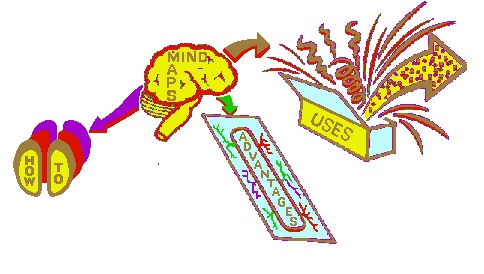How to Mind Map
- Use just key words, or wherever possible images.
- Start from the center of the page and work out.
- Make the center a clear and strong visual image that depicts the general
theme of the map.
- Create sub-centers for sub-themes.
- Put key words on lines. This reinforces structure of notes.
- Print rather than write in script. It makes them more readable and
memorable. Lower case is more visually distinctive (and better remembered) than
upper case.
- Use color to depict themes, associations and to make things stand
out.
- Anything that stands out on the page will stand out in your mind.
- Think three-dimensionally.
- Use arrows, icons or other visual aids to show links between different
elements.
- Don't get stuck in one area. If you dry up in one area go to another branch.
- Put ideas down as they occur, wherever they fit. Don't judge or hold back.
- Break boundaries. If you run out of space, don't start a new sheet; paste
more paper onto the map. (Break the 8x11 mentality.)
- Be creative. Creativity aids memory.
- Get involved. Have fun.

Mind Map Software |
Mind Maps |
Advantages of Mind Maps |
Uses of Mind Maps
More information and examples can be found in The Brain Book and Tony Buzan's The Mind
Map Book